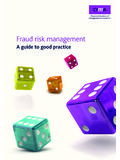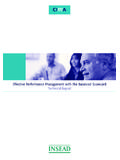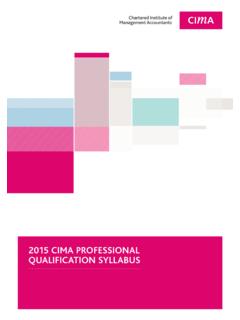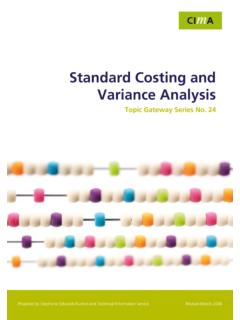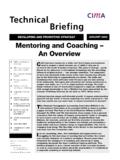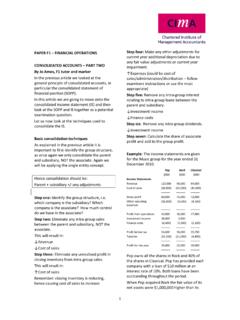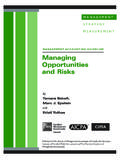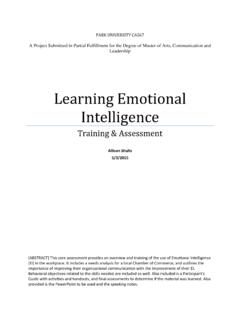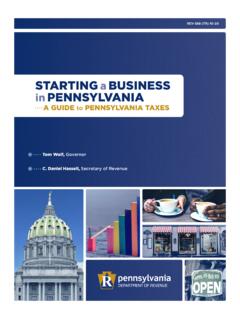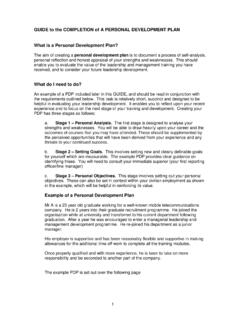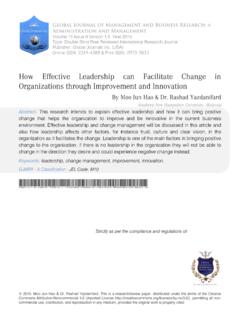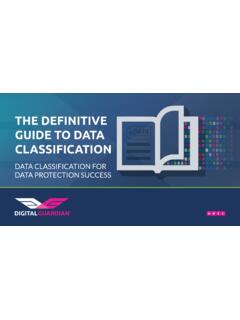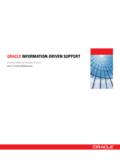Transcription of Balanced Scorecard - Chartered Institute of Management ...
1 Balanced Scorecard Topic Gateway Series 1 Balanced Scorecard Topic Gateway Series No. 2 Prepared by Stephanie Edwards and Technical Information Service June 2006 Balanced Scorecard 2 Topic Gateway Series About Topic Gateways Topic Gateways are intended as a refresher or introduction to topics of interest to CIMA members. They include a basic definition, a brief overview and a fuller explanation of practical application. Finally they signpost some further resources for detailed understanding and research.
2 Topic Gateways are available electronically to CIMA Members only in the CPD Centre on the CIMA website, along with a number of electronic resources. About the Technical Information Service CIMA supports its members and students with its Technical Information Service (TIS) for their work and CPD needs. Our information specialists and accounting specialists work closely together to identify or create authoritative resources to help members resolve their work related information needs. Additionally, our accounting specialists can help CIMA members and students with the interpretation of guidance on financial reporting, financial Management and performance Management , as defined in the CIMA Official Terminology 2005 edition.
3 CIMA members and students should sign into My CIMA to access these services and resources. The Chartered Institute of Management Accountants 26 Chapter Street London SW1P 4NP United Kingdom T. +44 (0)20 8849 2259 F. +44 (0)20 8849 2468 E. Balanced Scorecard Topic Gateway Series 3 Definition and concept An approach to the provision of information to the Management to assist with strategic policy formulation and achievement. It emphasises the need to provide the user with a set of information which addresses all relevant areas of performance in an objective and unbiased fashion.
4 The information provided may include both financial and non-financial elements and cover areas such as profitability, customer satisfaction, internal efficiency and innovation. CIMA Official Terminology, 2005 Context In the current syllabus, CIMA students will learn and may be examined on this topic in paper P6 Management Accounting business Strategy. Study systems for these papers are available from CIMA Publishing. Related concepts Activity based Management ; the CIMA Strategic Scorecard Alternative concepts The Performance Pyramid; the EFQM Model; Strategy Maps. All of these are discussed in the CIMA report A practitioner's guide to the Balanced Scorecard (PDF 268KB).
5 Available from: [Accessed 29 June 2007]. Overview and brief history The basic idea of the Balanced Scorecard (BSC) is to focus the organisation on performance measures and implementing the current strategy. The BSC comprises measures from financial, customer, internal processes and learning and growth perspectives. The aim is to avoid focusing only on short term financial measures. The BSC enables managers to focus their efforts and to understand the links between the four key areas. The BSC technique was developed by Kaplan and Norton (1992, 1996) to combine financial control measures with non-financial control measures.
6 It is used for implementing the mission and objectives of an organisation s business strategy. The purpose of the BSC is to enable effective monitoring and control of the business . Balanced Scorecard Topic Gateway Series Essentially, the BSC is a Management system that enables an organisation to identify and clarify its vision and strategy, and translate them into action. It provides feedback around both the internal business processes and external outcomes to improve continuously strategic performance and results. However, it does not focus on strategic issues from a transformational change perspective.
7 These may be better covered by the framework offered by the CIMA Strategic Scorecard . Available from: [Accessed on 29 June 2007]. Balanced Scorecard quadrants The Balanced Scorecard consists of four interrelated quadrants, each containing measures for a distinct perspective. These perspectives are: financial customer internal processes learning and growth. These four perspectives are designed to cover the whole of the organisation s activities, both internally and externally, current and future. 4 Balanced Scorecard Topic Gateway Series 5 Financial perspective The financial perspective is a key factor of any performance measurement system because an organisation s financial performance is fundamental to its success .
8 Measures reflecting financial performance include the number of debtors, creditors, cash flow, profitability and return on investment. The main problems with financial measures are as follows. They are based on past data. Financial measures show what has happened but they may not tell us what is currently happening. They are not necessarily a good indicator of future performance. They are short termist and do not focus on the organisation s long term financial strategy. Customer perspective These are measures that have a direct impact on customers. They could include time taken to process a phone call, the number of customer complaints, results of customer surveys or volume of repeat customers.
9 The customer and customer satisfaction have had a growing importance in business . Businesses recognise that if customers are not satisfied, they will find other suppliers to meet their needs. business process perspective These are measures of key business processes, such as time taken in production, re-work costs or time to process an order. These internal business focused measures allow the organisation to measure how well the business is operating and whether its products and services meet customer requirements. Learning and growth perspective These are measures that highlight an organisation s development and learning ability.
10 They might include the number of training days, the number of qualified staff or total hours spent on staff training. This perspective includes staff training and attitudes to organisational culture related to both individual and corporate self-improvement. This quadrant recognises that in a knowledge worker organisation, people are the greatest resource. Kaplan and Norton focus upon the fact that 'learning' is more than 'training'. Balanced Scorecard Topic Gateway Series The measures used in the BSC are mutually consistent and reinforcing. The BSC should be viewed as more than a collection of disparate financial and non-financial indicators.
